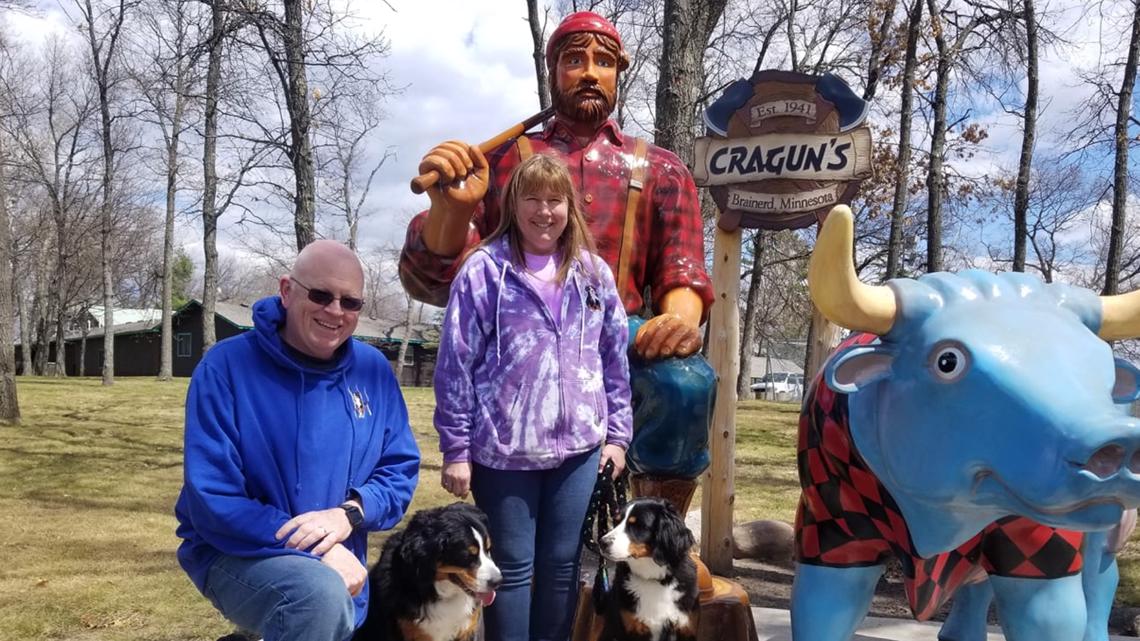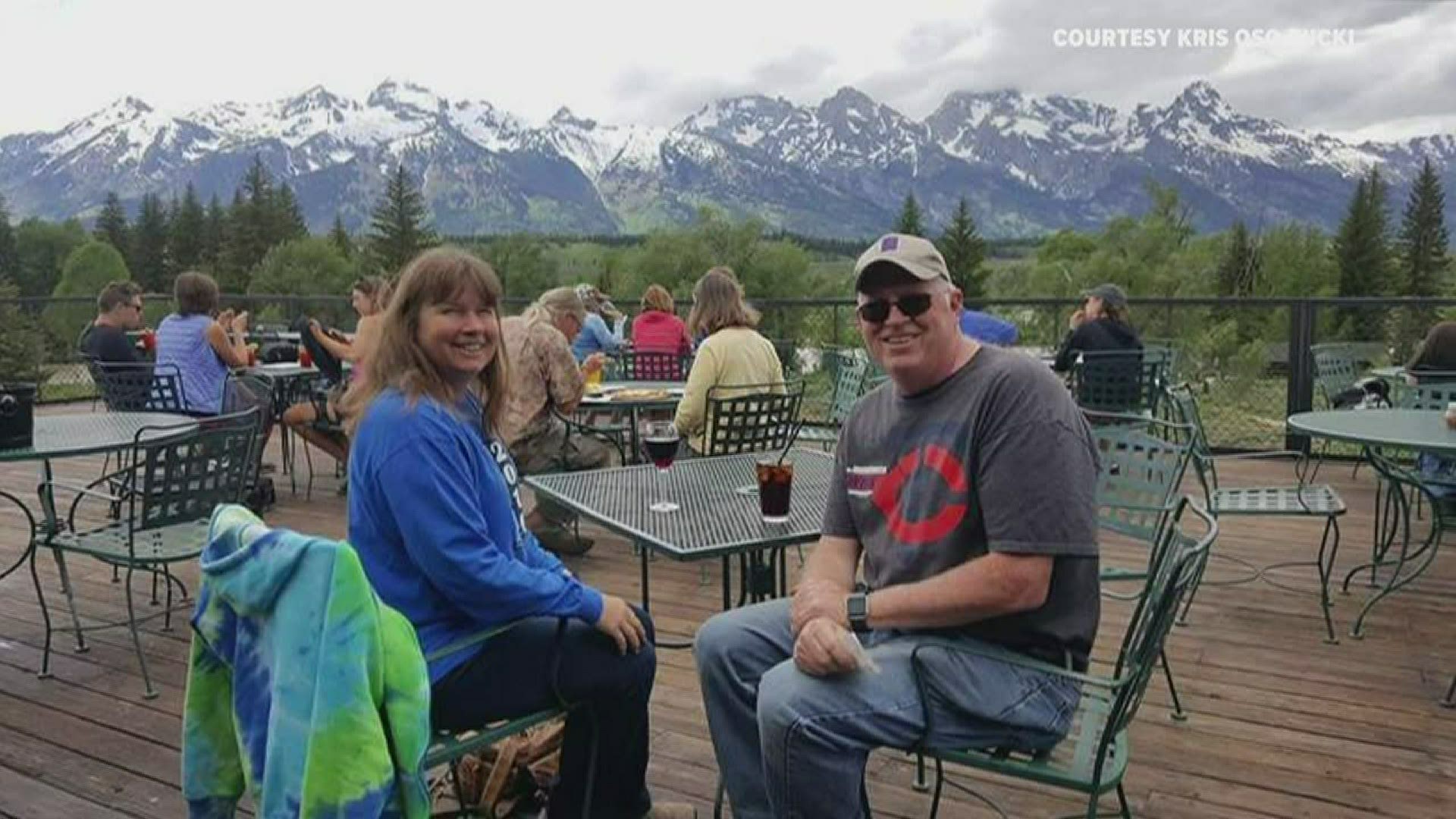They were engineers and homemakers. Laborers and health care workers. One was an executive; another a school bus driver. More than two dozen were U.S. military veterans.
Death certificate records released by the Minnesota Department of Health identify more than 60 of the state’s victims of COVID-19, illustrating how the virus preys primarily on older residents forced to die alone, while cruelly leaving behind friends and family members who never really got a chance to say goodbye.
Almost all of those identified so far were white and in retirement ages. Only three were in their 50s or younger.


Clark Osojnicki was one of those younger victims. He worked as a financial systems analyst at a downtown Minneapolis law firm. His wife, Kris, his high school sweetheart of more than 30 years, said he was infected sometime in early March, but can’t know for sure how – maybe on a downtown skywalk or an elevator.
“Because he got it so early, people weren’t being particularly careful,” his wife said.
Though he had Type II diabetes, Kris said it was well managed and that he was healthy.
After two weeks, walking from the bathroom to the couch exhausted him. She described a frantic, frustrating journey to try get him help, calling doctors “umpteenth times” before finally going to an urgent care and later to Lakeview Hospital in Stillwater.
When Kris dropped her husband off there, she never got to see him in person again. “Nobody’s allowed visitors,” she said.
And when he was put on a ventilator, she was never able to speak to him again.
“I had no idea he wasn’t going to make it,” she said. “So, it wasn’t a goodbye conversation. It was just hey, we need you to get home.”
He died on April 10 at the age of 56.
“People need to take this seriously. It’s a big deal. It can hit anybody,” she said.
Like Osojnicki, more than three quarters of Minnesota’s COVID-19 victims had an underlying condition when they died, many with Alzheimer’s, dementia, diabetes or coronary heart diseases. Nearly half listed their last place of residence as a nursing home.
Elie Farhat, for example, was in the Catholic Elder Care facility in Minneapolis where he was suffering from Alzheimer’s.
He had been born in a Lebanese orphanage and grew up to be a successful banker. His son, James, said his father dedicated his life and money to other orphans in Lebanon, opening two Catholic care centers there.
“All he cared for was making sure that orphans and poor people were taken care of,” his son said. “He wanted nothing in return.”
Elie immigrated to the United States more than 30 years ago to be with his children, who had earlier come to the country for college and stayed.
He got infected while in the nursing home around the first of April and died two weeks later at the age of 92.
Like nearly all of those who die of COVID, their families can’t be there with them in their final moments.
“My regret is that he was born an orphan and he died with nobody around him,” his son said. “And that broke my heart.”
Donald Lydick also had to die alone. He grew up in Massachusetts, then moved to San Diego where he worked as a nurse in the Navy. About twenty years ago he moved to Minnesota and worked at a golf course and loved it, said his sister, JoAnne Fleming. He was easy going, the type of guy who would turn the other cheek if insulted.
He was living with his girlfriend when he became ill around March 23. He thought he had the flu, but soon after he could barely breathe and had to go to the hospital.
That day he texted his sister and told her he was scared he was going to die, “that this virus is going to get me,” she said.
Twelve days later he was gone, dead at the age of 60. His girlfriend is now in critical condition battling the virus, Fleming said.
“Now he’s coming home to us in a box,” she said. “People need to know that this is real, and it’s vicious.”
Data on people who died due to COVID-19 and/or COVID-19 contributed to their death from Jan. 1, 2020 to April13:
Race
- White: 58
- Hispanic or Mexican: 2
- African American: 1
- Hmong: 1
- American Indian: 1
Gender
- Female: 28
- Male: 35
Lived in a nursing home
- No: 34
- Yes: 29
Ages
- 30s: 1
- 40s: 0
- 50s: 2
- 60s: 6
- 70s: 9
- 80s: 27
- 90s: 17
- 100s: 1
Had underlying conditions
- Yes: 45
- No: 18
Data from Jan. 1, 2020 to April 13
Source: Minnesota Department of Health Vital Records, KARE 11 analysis
*Data excludes cases where cause of death due to COVID-19 was listed as probable, results pending, or possible.
KARE 11’s coverage of the coronavirus is rooted in Facts, not Fear. Visit kare11.com/coronavirus for comprehensive coverage, find out what you need to know about the Midwest specifically, learn more about the symptoms, and see what companies in Minnesota are hiring. Have a question? Text it to us at 763-797-7215. And get the latest coronavirus updates sent right to your inbox every morning. Subscribe to the KARE 11 Sunrise newsletter here. Help local families in need: www.kare11.com/give11.
The state of Minnesota has set up a hotline for general questions about coronavirus at 651-201-3920 or 1-800-657-3903, available 7 a.m. to 7 p.m. There is also a data portal online at mn.gov/covid19.

